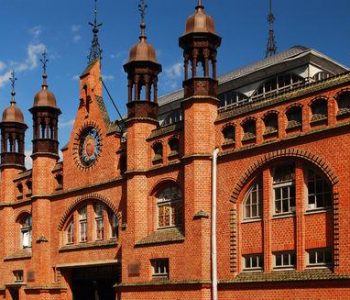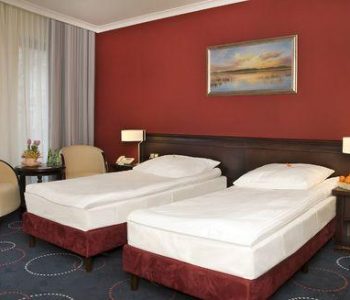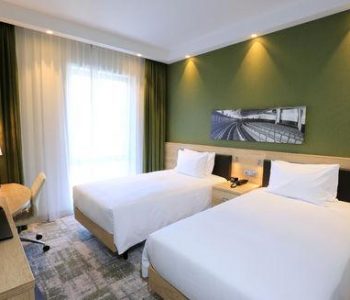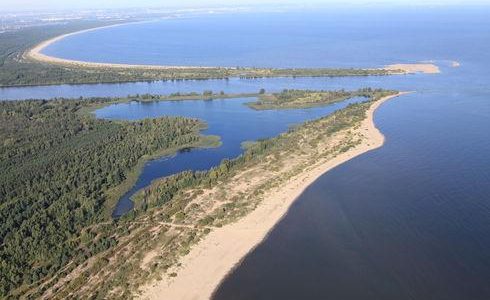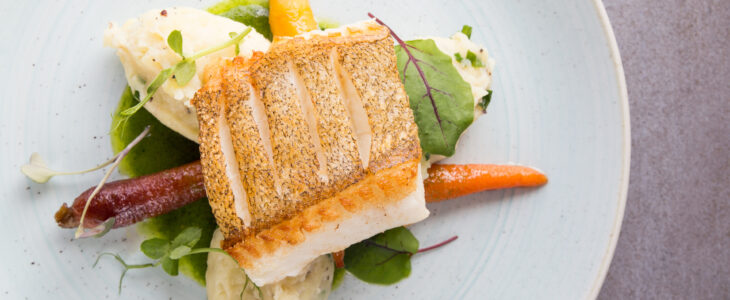The church is built on the intersection of two important trade routes: the ancient merchants’ route (via mercatorum) and the tract leading from Gdańsk Castle to the ducal properties in Pomerania. Since its beginning, the church served both the local population and numerous visiting merchants and sailors from all parts of the world (as St. Nicholas was their patron in medieval times).
On 22 January 1227, the Duke of Pomerania, Świętopełk, presented the church to the Dominican monks, who had just arrived in Poland. They immediately began intensive ministry operations both within the city and in the nearby Prussia. A monastery was built next to the expanded church, which was soon home to almost 200 monks.
In 1260, Pope Alexander IV granted the Gdańsk Dominicans the privilege of a plenary indulgence on the day of 4 August. From this time, pilgrims began to visit Gdańsk, while the city council began to organise the Dominican fair on this day.
Gdańsk’s transfer to the rule of the Teutonic Knights in 1308 was the beginning of a new chapter in the history of St. Nicholas’ Church. The previous temple turned out to be too small for the developing and increasingly wealthy city. Therefore, the Dominicans built a new church next to the old one – which is preserved to this day (the remains of the initial Roman project are located under the market hall). The Teutonic Knights founded their own chapel inside.
The most dramatic period in the history of the church was the 16th Century – the reform era. The church was destroyed and plundered several times during uproars. The monks were driven out of the monastery, and some of them lost their lives… In 1578, they returned to the monastery and assumed pastoral service over the Catholic population of the increasingly Protestant Gdańsk. From this time, the greatness of “Nicholas” began once again. The monastery was inhabited by a rising number of monks, the intellectual life and preaching blossomed, and the church received new, magnificent fittings (main altar, stalls, a pulpit, organs). The significance of the temple was confirmed by the regular visits of successive Polish Kings during their stays in Gdańsk. The Dominican church was the place where King Sigismund Vasa of Sweden received the election Act for the King of Poland in 1587.
This era of the monastery’s (and all of Gdańsk’s) greatness ended with the partitions of Poland, followed by the Napoleonic wars.
This gothic building was the only one which did not suffer damage during the operations of World War II. One story saqys that St. Nicholas’ Church was spared by the Soviet soldiers burning down Gdańsk due to the patron, who was particularly venerated by the Orthodox Russians. Another theory states that the parish priest bribed the Red Army soldiers with the alcohol reserves of the church cellar to prevent them from plundering and burning down the church.
After a 112-year absence, the Dominican monks once again reappeared in Gdańsk and occupied their former home in April 1945. They mainly came from Lvov, which was being deserted by the Poles – from there, they brought the medieval icon of the Mother of Christ of Victory, the patron of the city (which remains in the church to this day).
In Gdańsk, the Dominicans assumed pastoral operations among the increasing number of the Polish population arriving in the city. The parish they received covered a significant part of the city. In time, along with the foundation of new parishes, the monks were also able to devote themselves to other types of pastoral service, more closely related to their charisma.
The interior has preserved rich gothic, Renaissance, Baroque and Rococo furnishings. Despite the fact that the patron of the church is the guardian of sailors, there are not too many marine elements in the temple. The art of late Renaissance is represented mainly by the richly- decorated, five-storey main altar from 1643.
The oldest gravestone is that of the Teutonic Knight Caspar Wulfstein of Thuringia.
Next to St. Nicholas, the saints depicted on the main altar of the church include three Poles – Jacek Odrowąż and his brother Czesław – the first Polish Dominicans – and Stanisław Szczepanowski, Bishop and martyr; three Spaniards: Dominic Guzman, the founder of the Dominican Order, Thomas Aquinas, the church physician, Raymond of Penyafort, the continuer of the Dominican mission, six Italians: Giovanni Bernardone, better known as St. Francis of Assisi, Agnes of Montepulciano and Catherine of Siena, Peter of Verona, Italian inquisitor and martyr, Antonin Pierozzi of Verona, Dominican and Archbishop, and one Czech – Wojciech Sławnikowic, Bishop, missionary and martyr.
In 2010, the statue of the Duke of Gdańsk, Świętopełk II the Great, was erected on the square near the church, between Świętojańska and Szeroka Streets. The statue has the following inscription: “Zrzeszonëchnajunicht nie złómie” – a reference to the legend of the Kashubian origin of the Duke and the entire dynasty, which ruled the Gdańsk Pomerania during the 12th and 13th Centuries. The presentation of the ruler has already provided the monument with the name “Viking statue”.
Galeria
Warning: Attempt to read property "ID" on array in /home/klient.dhosting.pl/intui/pomorskie-travel.intui.eu/public_html/wp-content/themes/pomorskie-travel/single-poi.php on line 163

Warning: Attempt to read property "ID" on array in /home/klient.dhosting.pl/intui/pomorskie-travel.intui.eu/public_html/wp-content/themes/pomorskie-travel/single-poi.php on line 163

Warning: Attempt to read property "ID" on array in /home/klient.dhosting.pl/intui/pomorskie-travel.intui.eu/public_html/wp-content/themes/pomorskie-travel/single-poi.php on line 163



